This review was provided for free, but Surface 604 did provide a temporary demo bike for me to test. My goal is to be transparent and unbiased with you, this video and writeup are not meant to be an endorsement of Surface 604 products. I welcome your corrections, additions, and feedback in the comments below, and the Surface 604 electric bike forums.
Observations:
- This is one of the few electric mountain bikes with a hub motor and torque sensor that I’ve tested. The torque sensor makes power delivery more instantaneous and proportional than a cadence sensor. It’s a great option for off-road trail and mountain riding, when precision is important.
- Surface 604 offers a bunch of great add-on accessories for their ebikes, including a rear rack with pannier hangers, pannier bags, trunk bags, and an optional suspension seat post with shim (adapts 30.4mm to 27.2mm). They also sell two battery pack sizes and a fast charger that fills the higher capacity battery much faster.
- The Shred XS is an “extra small” small version of the Shred model (which itself comes in S/M and M/L frame sizes). The XS comes with 26″ wheels vs. 27.5″ which lowers the frame, and the frame itself is smaller (shorter reach, lower stand-over height. Note that the Shred XS is technically compatible with the optional Wren inverted suspension fork, but the geometry will change a bit because of the smaller front wheel size. It is also not compatible with the optional fenders that work for the larger Shred models, but may be getting its own at some point!
Pros:
- Building on prior generations of this same model, Surface 604 has added a narrow-wide chainring to reduce drops, increased battery capacity options, and the new XS model in addition to their full sized small-medium S/M and medium-large M/L frame sizes. This is a great option for petite riders and youth. I’m 5’9″ tall and was able to enjoy it will nearly full leg extension with the seat post fully raised.
- The stock 672 watt hour battery is above average, but their 960wh option only costs $300 and would be great for long distance rides, people who rely on the throttle frequently, or those who plan on carrying gear. The bike comes with a USB charging port below the display, a second port on the battery pack, has an integrated headlight, and is wired for a rear light (that comes with their rear rack option). The optional rear light even blinks when you pull either brake lever! This bike could easily transform into an off-road commuter platform.
- Outstanding headlight placement, not only is this a high quality 120 LUX light but it’s positioned high and points where you steer. The custom metal bracket ensures that the headlight does not collide with the large color LCD display panel. The light actually illuminates the path vs. just helping you be seen like many others, it has little side cutouts to improve visibility from multiple angles.
- Stylish paint job. The main color is satin black with some red and orange logos for branding. It has a more premium feel in my opinion, and nearly every hardware part is black to match including hubs, spokes, rims, cranks, seat post, stem, handlebar, and suspension fork (aside from the silver steel stanchions).
- The stem is short 60mm length with 0-degree rise and the handlebar is a low-rise vs. flat as you’d see on most dedicated cross country mountain bikes. These hardware decisions combine to offer a more upright “SUV” feel, and I’d consider this more of a hybrid design that’s useful in urban and off-road conditions.
- I’m glad that the bike has a kickstand, and appreciate that it’s adjustable length and mounted far enough back to not cause pedal lock. However, I did catch my left heel on it when pedaling at times.
- The bike is fairly comfortable thanks to its plus sized 2.8″ tires, Selle Royal gel saddle, and adjustable suspension fork. The stock fork offers 110mm of travel, has a preload clicker to “pre-load” the spring based on your weight, as well as a lockout for improved efficiency on paved streets.
- I was impressed that they used Boost hub spacing and a 15mm thru-axle up front. I believe the rear has a unique 138mm hub spacing that provides a bit sturdier bracing angle and fits the plus sized tires. The entire frame is custom with hyddro formed tubing and a gusset near the top of the seat tube for added top tube strength.
- The display is large and bright, the important readouts are easy to see, and the battery has a percentage readout that is much more precise than a basic five bar infographic! I also appreciate that offers adjustable angle to reduce glare.
- Trigger throttles seem like a good choice for electric mountain bikes because they are completely separate from the grips. I have noticed that sometimes I grip harder when I’m anxious or about to miss a stop or turn, and this can result in twisting a twist-throttle and going faster when I really wanted to stop or slow down. So, good job on the trigger throttle here, even though it adds a bit of reaching on the left to get to the control pad.
- The torque sensor is more responsive than a cadence sensor, and works well for technical terrain and off-road riding. I also found that it encourages active pedaling, which extends range.
- The hub motor is fairly quiet, I kept listening during the ride test and tried to show this in the video. I was told that this is a higher quality hub motor from Bafang. It offered good power, and I suspect they are using a pure sine wave controller.
- Nice drivetrain with a wide 11-36 tooth spread on the 9-speed cassette. The SRAM X5 component group is crisp, fairly light, and should be reliable (it’s two steps up from base level). I like how both triggers are actuated with the right thumb and the low lever can shift through three lower gears in one extended press.
- I appreciate that the battery lock cylinder is up high on the left side of the frame, that the battery can be charged on or off the bike (even though the charging port for the standard battery is close to the left crank arm and lower on the frame), and that they offer a fast 4-amp charger! These Reention Dorado battery designs have become fairly common, and seem to hold up over time. They aren’t as beautiful as a fully integrated pack, but they cost less and are modular and cross compatible with other bikes from what I’ve heard. Since the bike is black, the battery blends in with the black paint job of the bike.
- The bike can be unlocked to go a bit faster for off-road use or commuting as a Class 3 speed pedelec. This follows the more open battery design standard and trigger throttle. I believe they are mostly using Bafang parts.
- Given the higher potential top speed and heavier build of this ebike (especially with suspension seat post and rear rack options) the 180mm hydraulic disc brakes with adjustable reach levers and motor inhibitors are perfect. They purposefully use Tektro, which is a more trusted brand, and have composite brake pads that are designed to not squeal as much… though they did squeal a little bit in the rain and mud when I was filming ;)
- Surface 604 uses high quality sealed headset and bottom bracket bearings that are sealed against water. They will last longer and shouldn’t creak as much.
- I like the large, sturdy, Wellgo brand aluminum alloy platform pedals that Surface 604 chose here. They match the color and design of the bike, and provide a stable surface to stand compared to plastic or alloy cages. They have large openings for mud or snow to push through vs. clumping and getting slick.
- Both wheels are built with thicker spokes and 36 hole vs. 32 hole to add strength for the higher speeds, off-road use, and potential cargo.
- The trigger throttle overrides all levels of assist with full power, so you can zip up hills or catch up to friends without having to click any extra buttons. This is my favorite configuration because it’s more empowering. You can also completely unplug the throttle if you wish, which could help the bike comply with Class 1 or Class 3 riding.
- The smaller 26″ wheels provide a mechanical advantage for the hub motor and disc brakes. They will be even stronger than the standard 27.5″ wheels on the larger Shred models. You should get a lower standover height and shorter reach on this model as well.
Cons:
- Weighing in at ~59.6 lbs, I consider this ebike heavy for a hardtail cross country model. I think the weight is due in part to the spring suspension fork with wider Boost hub spacing and thru-axle, the high torque hub motor, and the wider plus sized tires.
- The bike does not come with a slap guard. I’d probably use a piece of clear box tape or purpose made sticker slap guard to protect the black paint from chips. Deep chips could expose the silver aluminum alloy frame and spoil the look a bit, but at least it won’t rust.
- There’s a little bit of crowding at the right rear dropout because the shifter cable and motor power cable both connect here. Try not to let these cables get snagged or bent (like if the bike tips over). There’s no derailleur guard or other protective hardware in place, which could also help during shipping. Be extra careful with the derailleur when unboxing.
- I appreciate how large the display is, but considering the mountain bike application… it could be exposed to falls and more scratches than a cruiser or city bike. I guess I’m pointing this out because most of the super high-end eMTB models these days are using small displays or integrating them into the top tube. I consider this ebike more of an SUV, and appreciate the integrated headlight and optional rear rack for cargo.
- If you pay extra for the high capacity 20 amp hour battery pack, you will notice that it spills out to the left of the downtube a bit. It’s not symmetrical like the standard 14 amp hour pack because it has longer 21700 cells inside vs. 18650 cells. However, this pack moves the charging port up higher, keeping it clear of the left crank arm.
- The S/M and M/L full sized Shred model comes with bottle cage bosses below the downtube. Although this is not the most convenient location, it can still be useful. The Shred XS has no bottle cage mounts and may not be compatible with the fenders or Wren inverted suspension fork, which would change the frame geometry because of the smaller 26″ wheel size.
- There’s no chain cover, chain guide, or even a chain guard on the chainring. This means that clothing could touch the greasy chain and get dirty or snagged. It also means that a log or obstacle strike could damage the chain and chainring directly, and the chain can fall off more easily… though the narrow wide chainring does keep it on track fairly well vs. a standard chainring.
- There are many benefits to a torque sensing ebike, but there are also some trade-offs and compromises. This ebike uses a metal plate similar to the TMM4 sensor, and is mounted to the rear right dropout. Doing rear wheel maintenance and tightening the rear axle bolts may impact the sensor, and I’ve noticed that chain bounce can sometime activate it even if you’re not pedaling. Torque sensors generally require more rider work than cadence sensors, but they may offer better range as a result.
- The cockpit is a little crowded because of the trigger throttle, remote button pad, display panel, brakes, shifters, and motor inhibitors. Most cables tidy up as they route through the frame, but the additional buttons and features just make the front a little messy. Also, you have to reach over the trigger throttle to press the button pad on the left.
- I experienced heal strikes when pedaling, where my large boot touched the kickstand. Keep this in mind if you have large feet or shoes, it wasn’t a deal killer and I’m grateful there was no pedal lock based on the kickstand location.

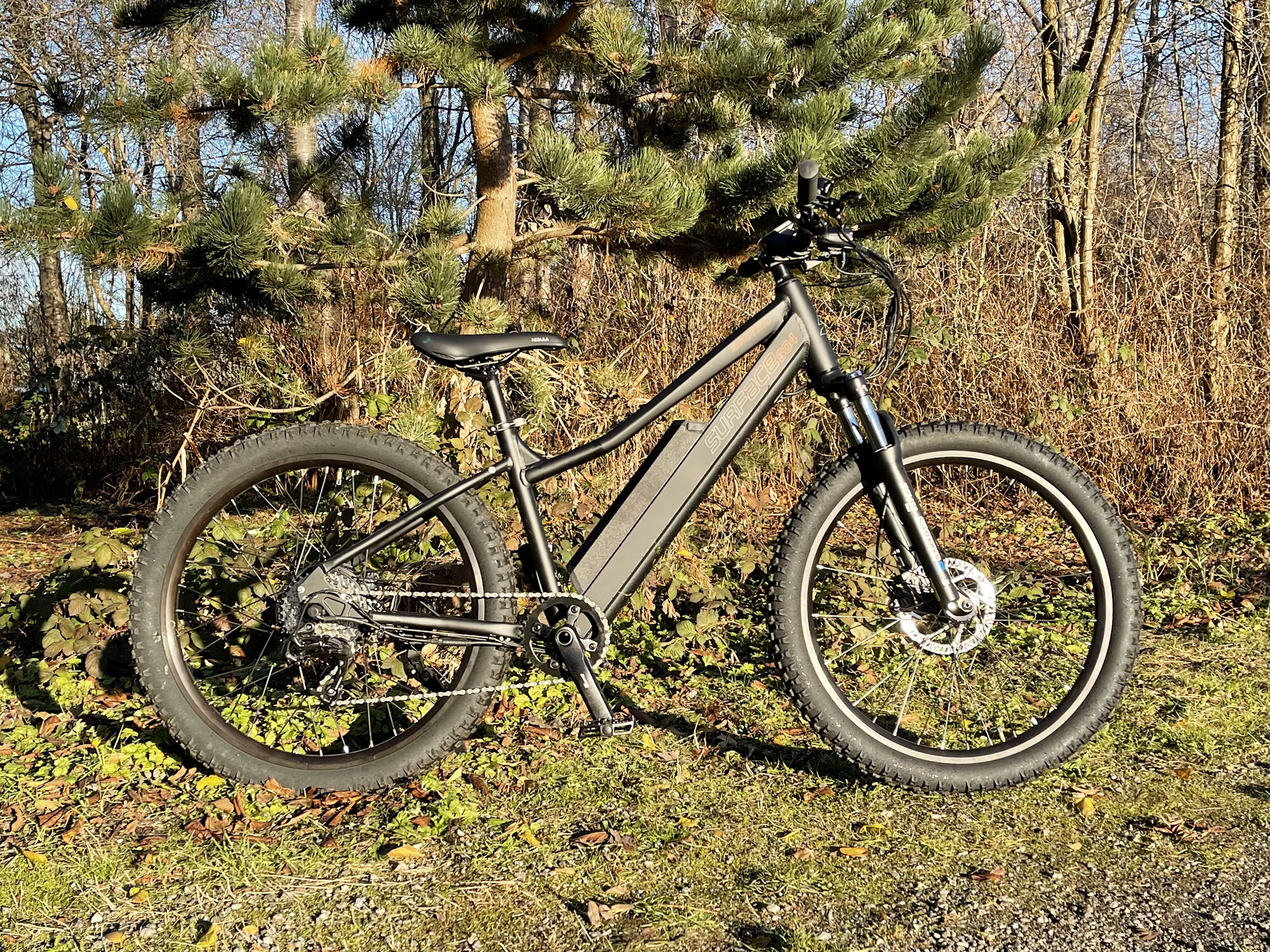

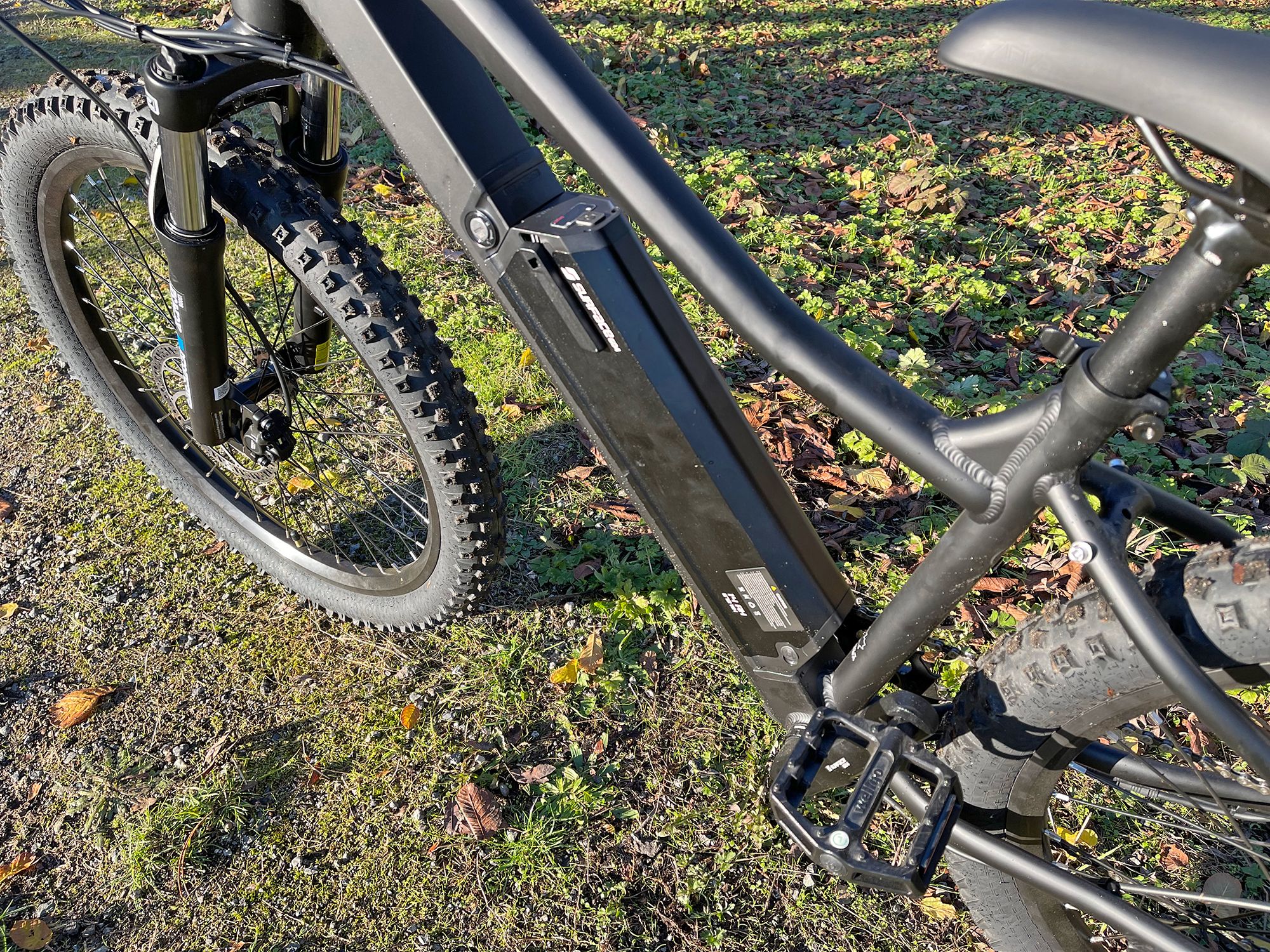
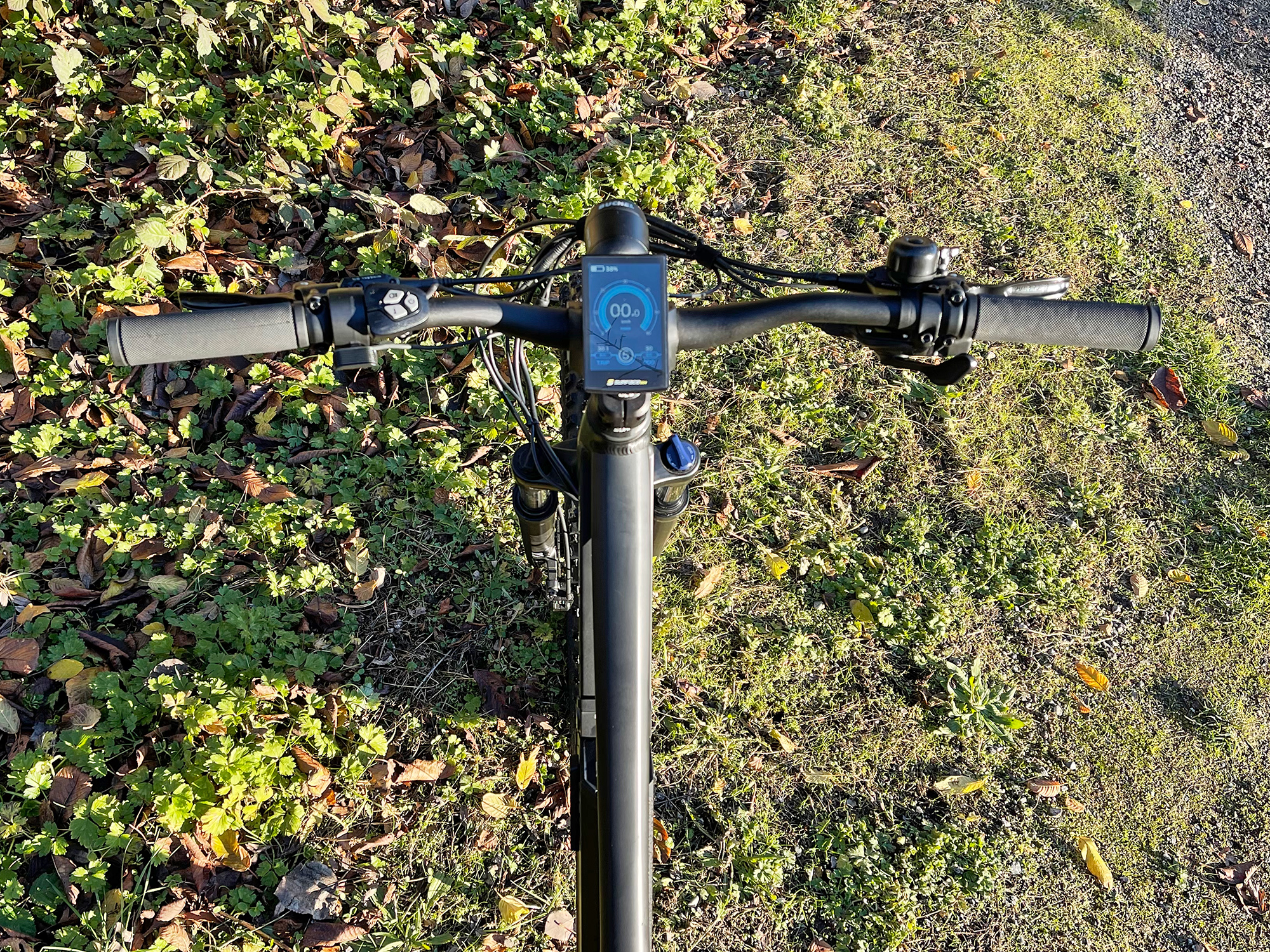
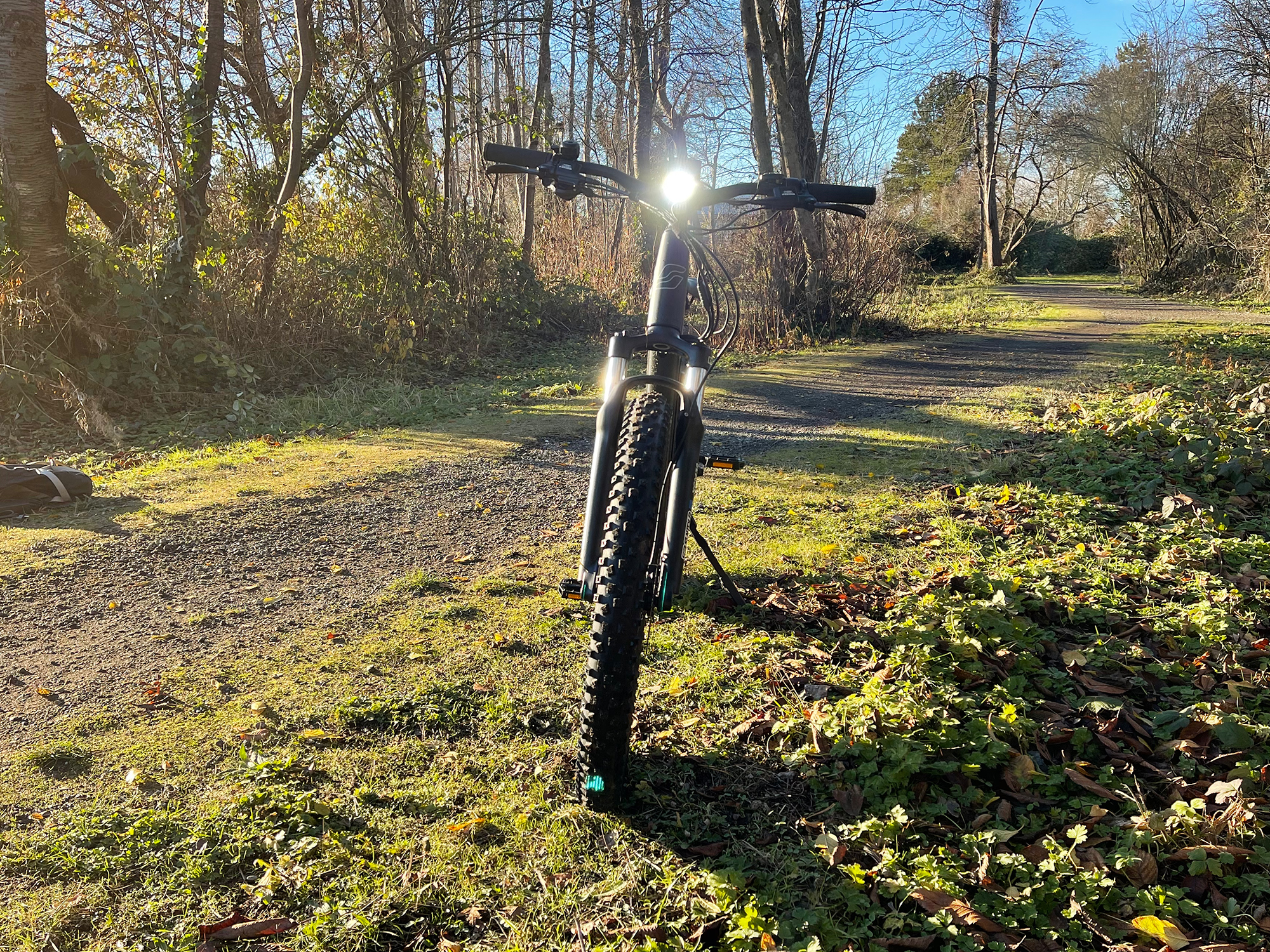
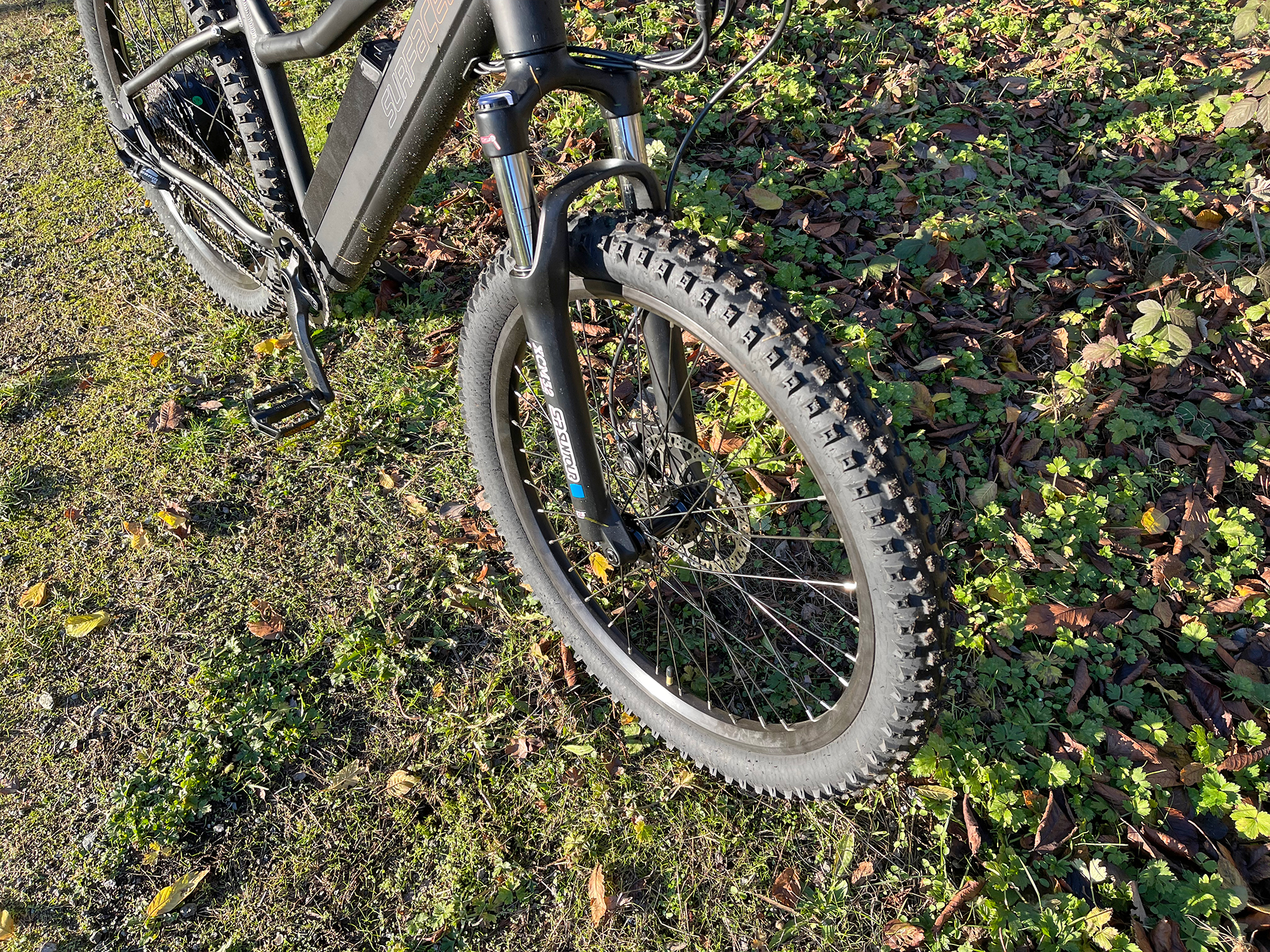
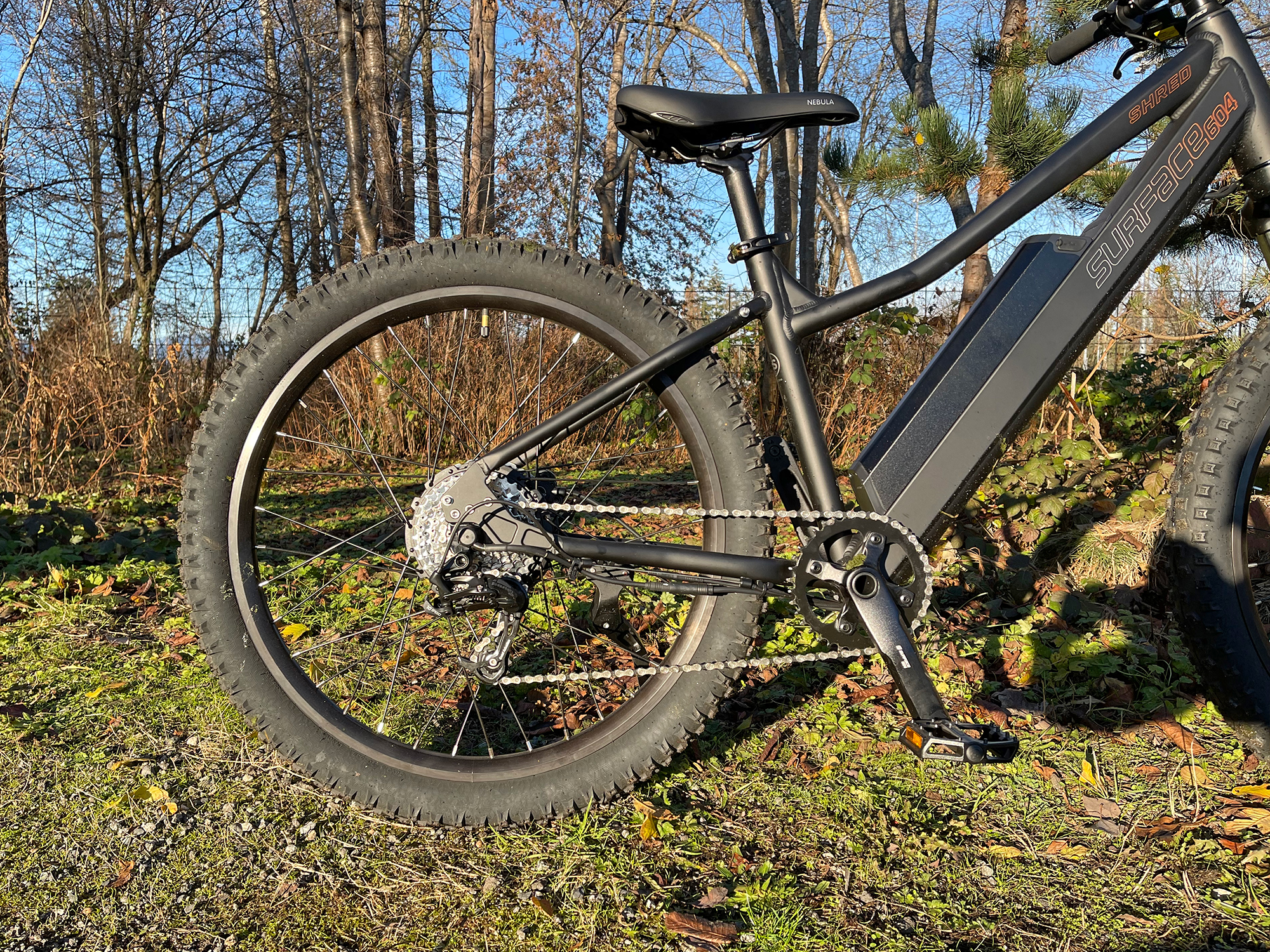
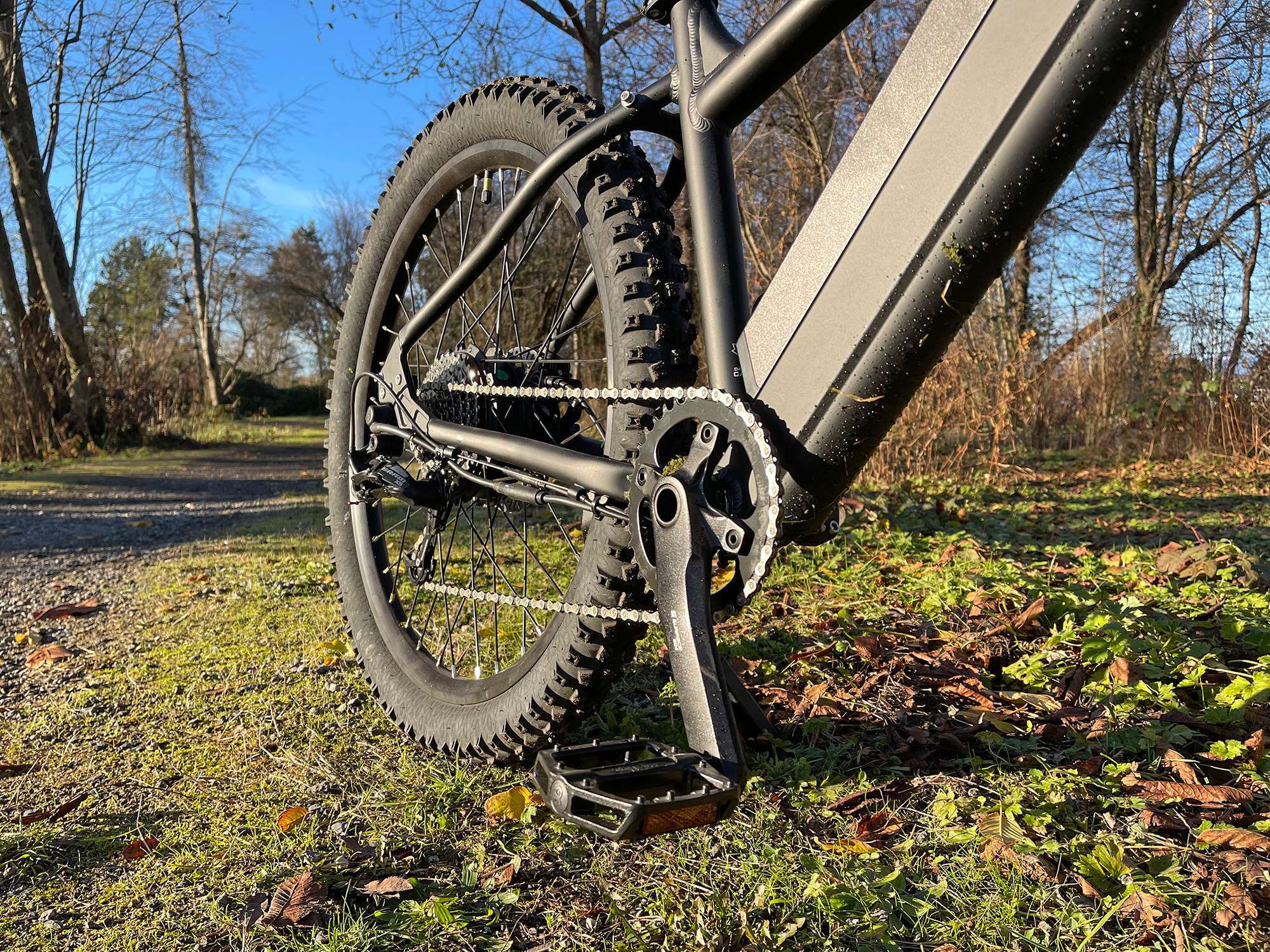
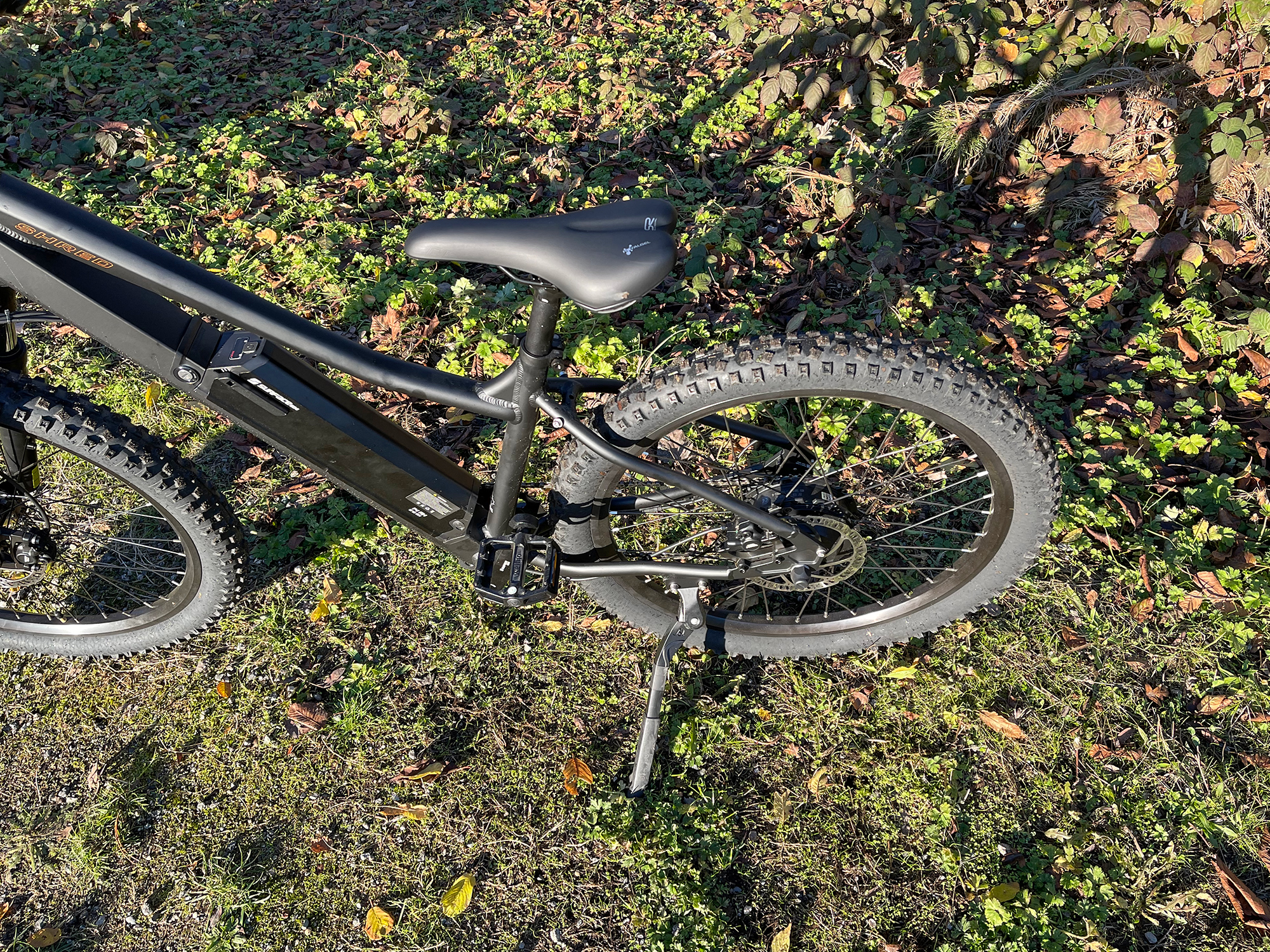
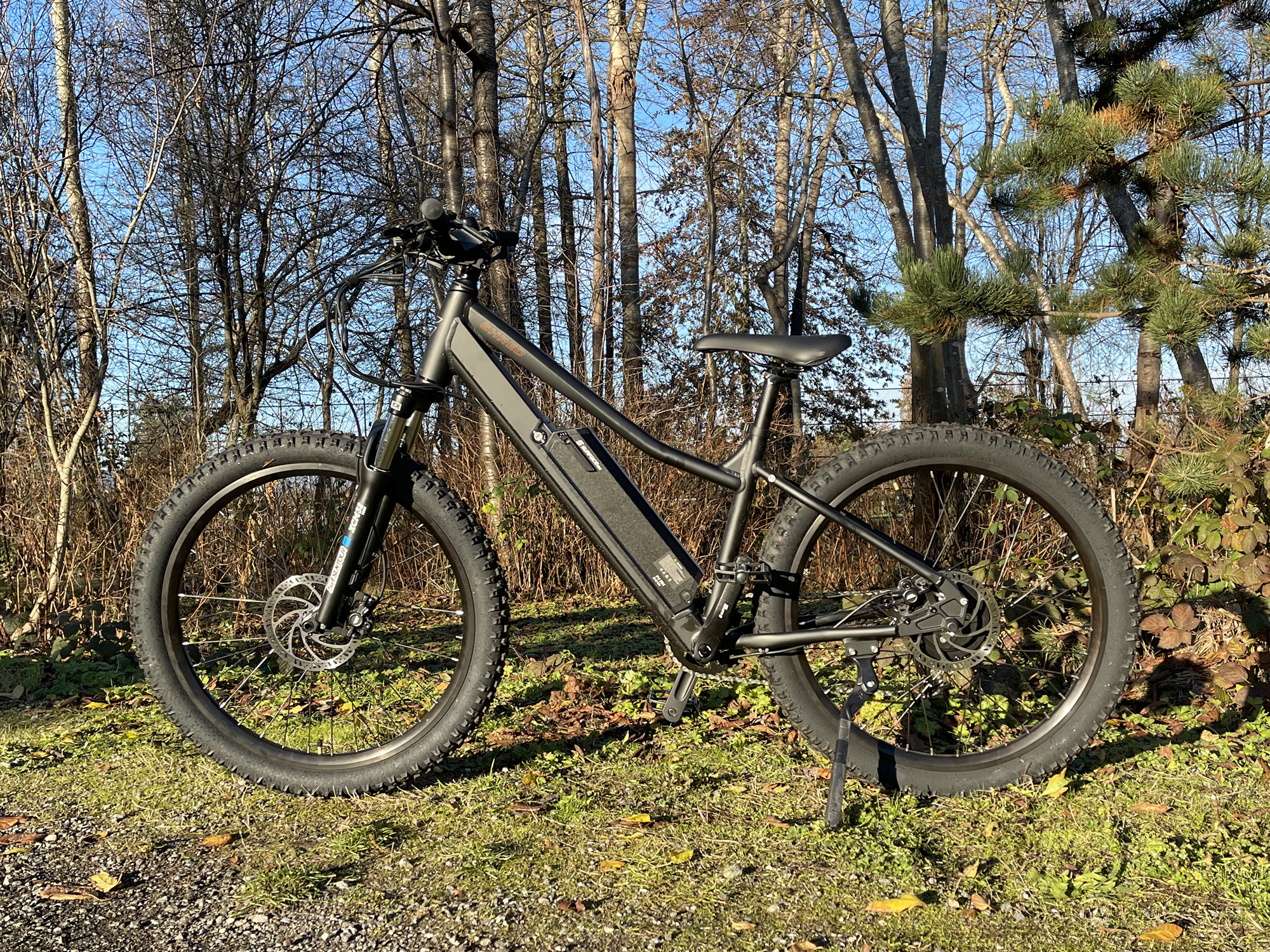

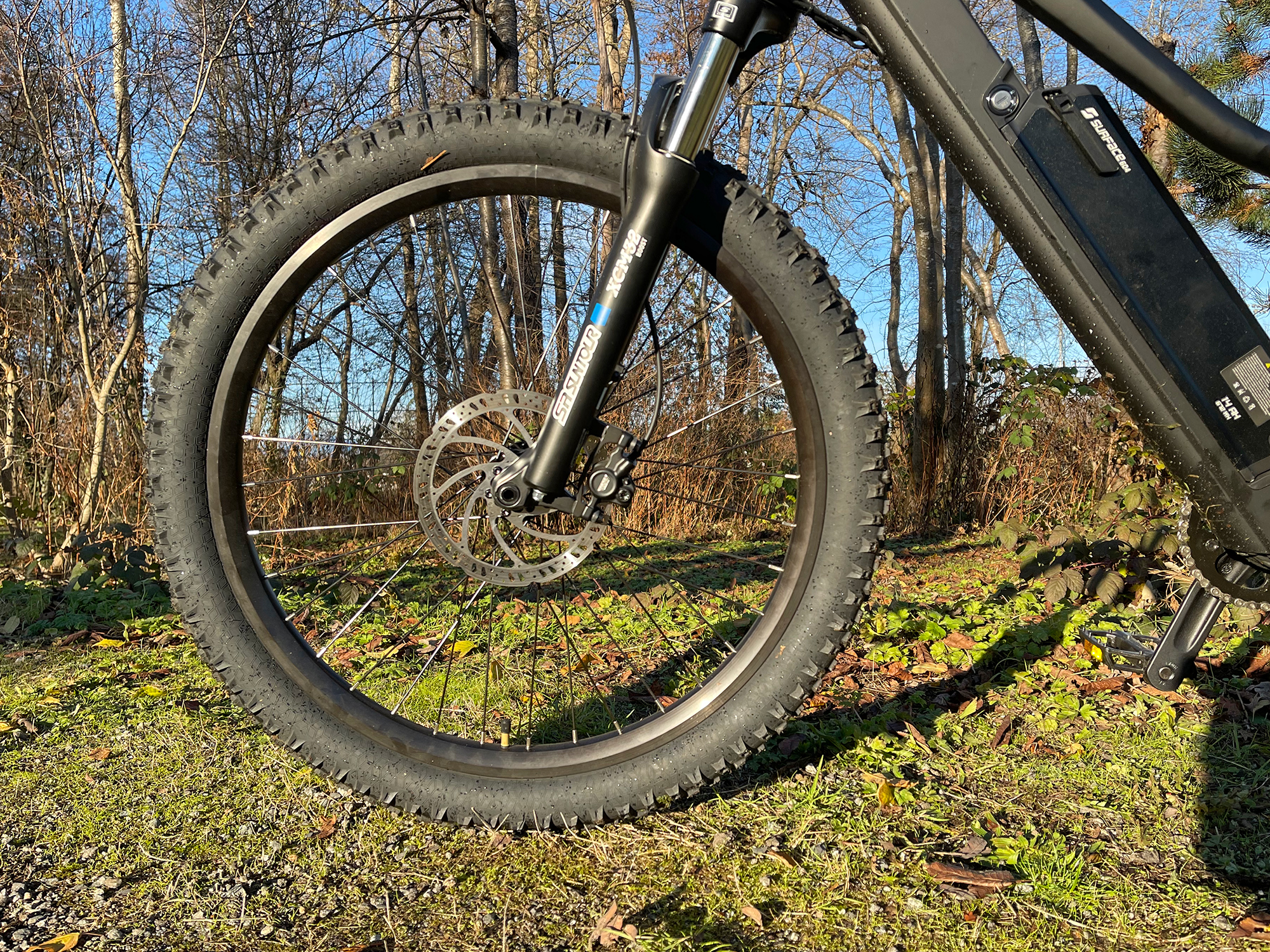
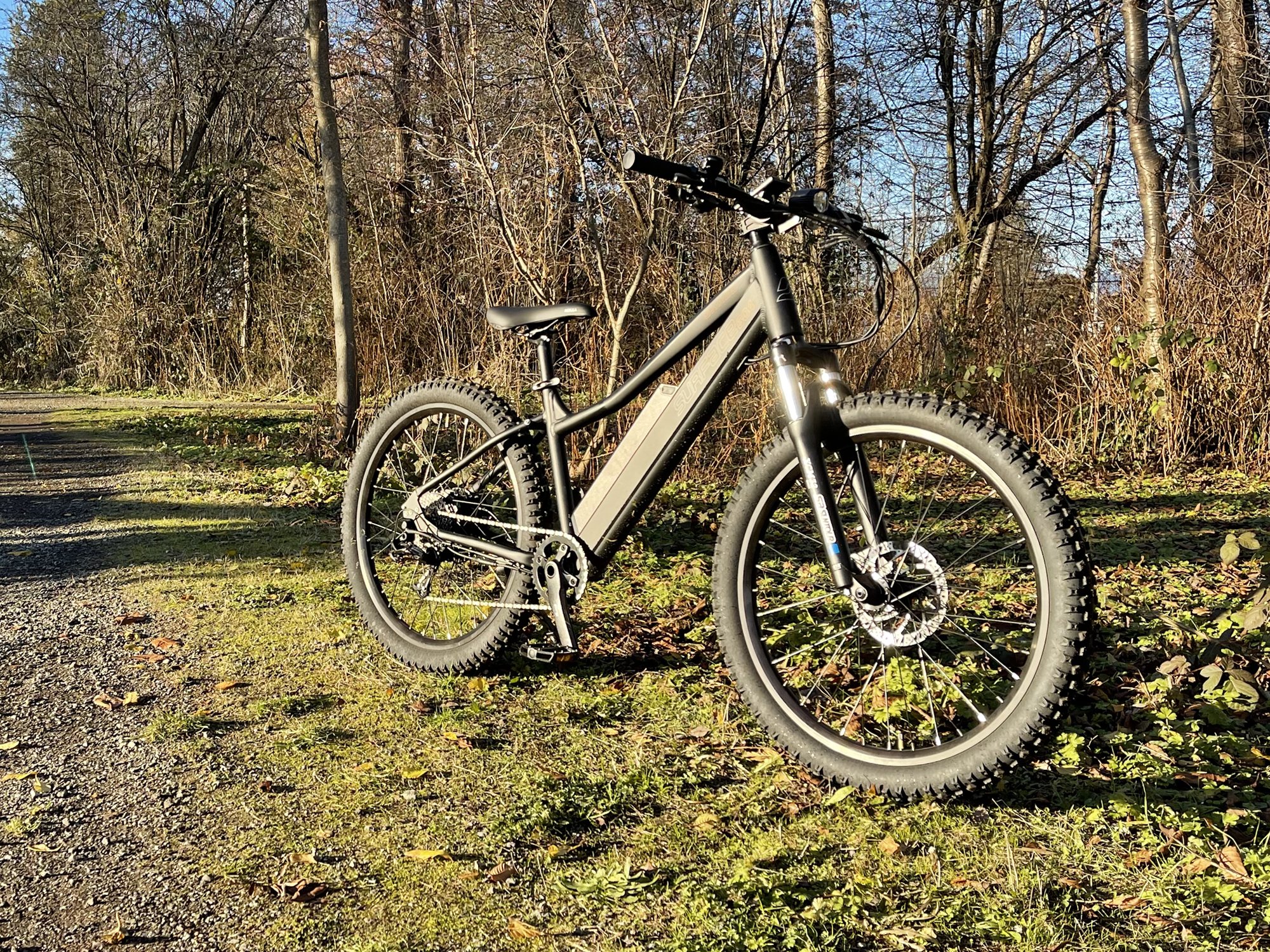
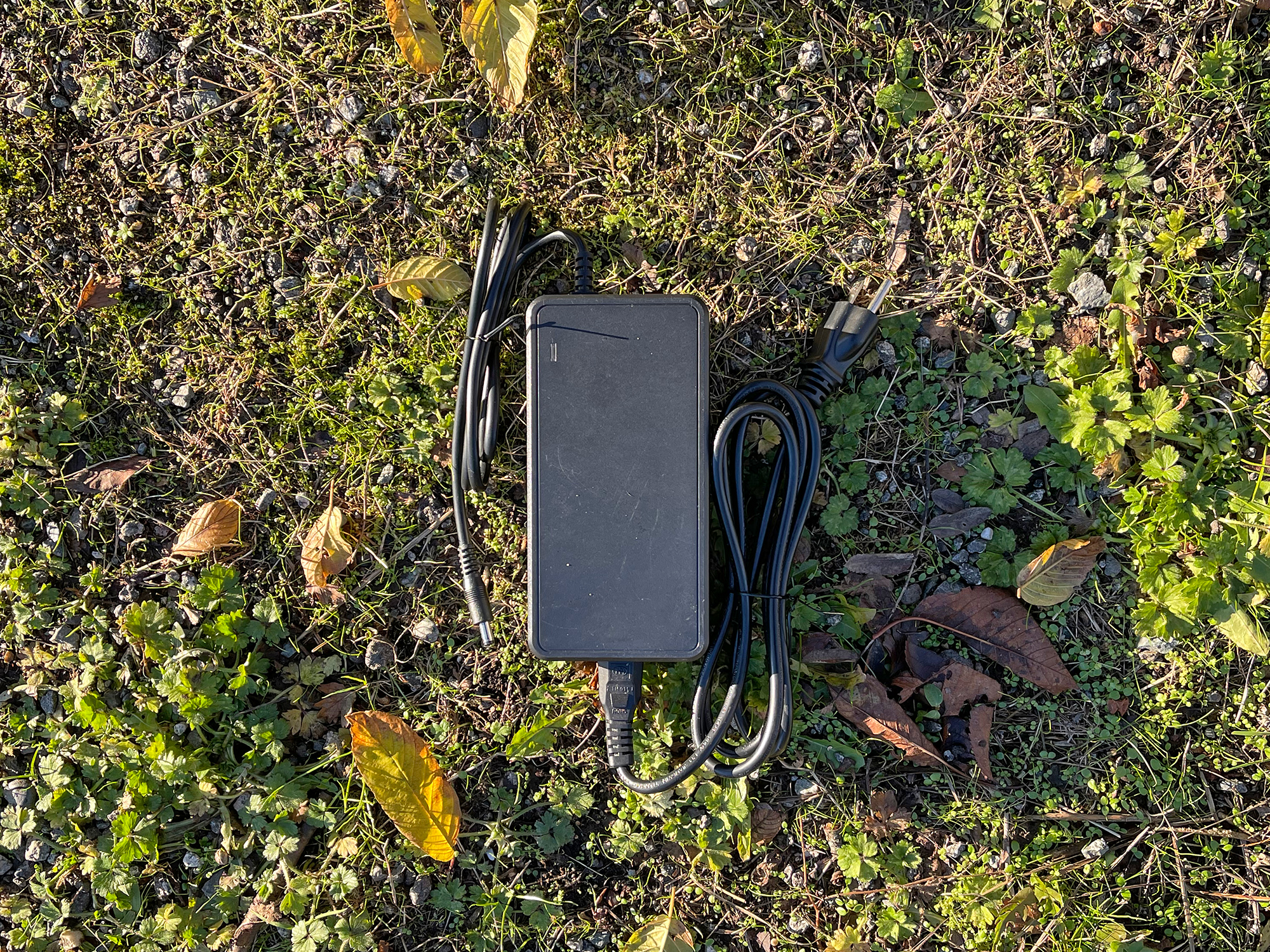
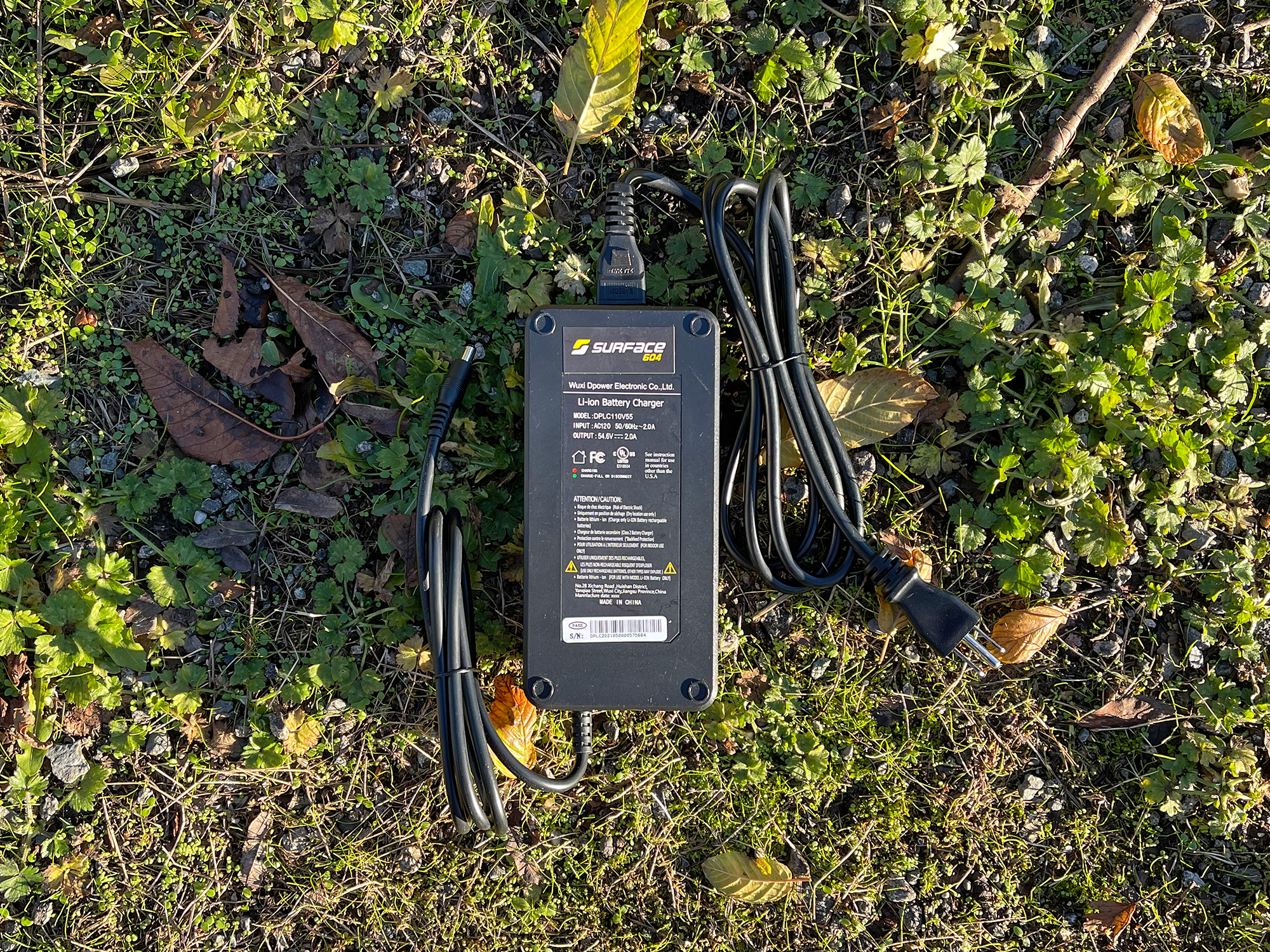


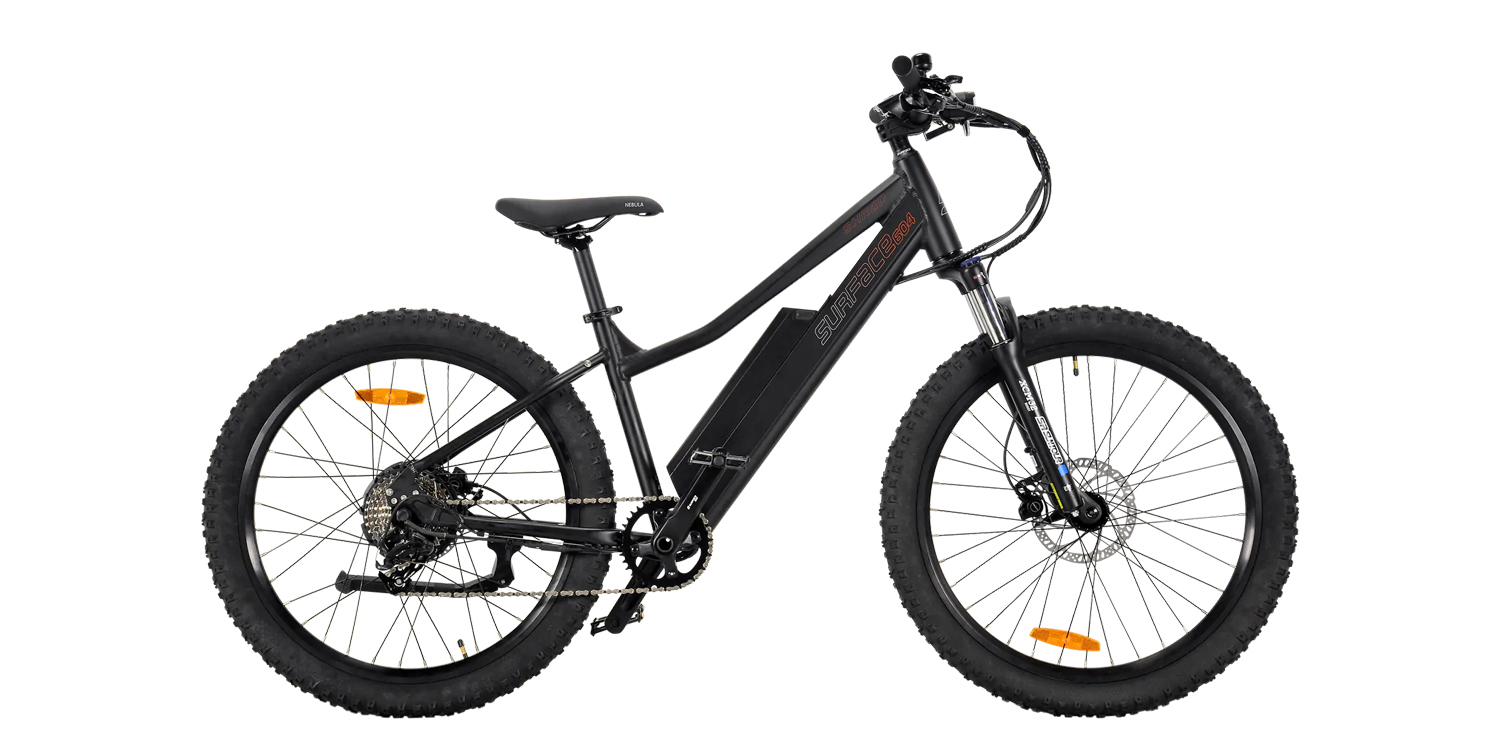
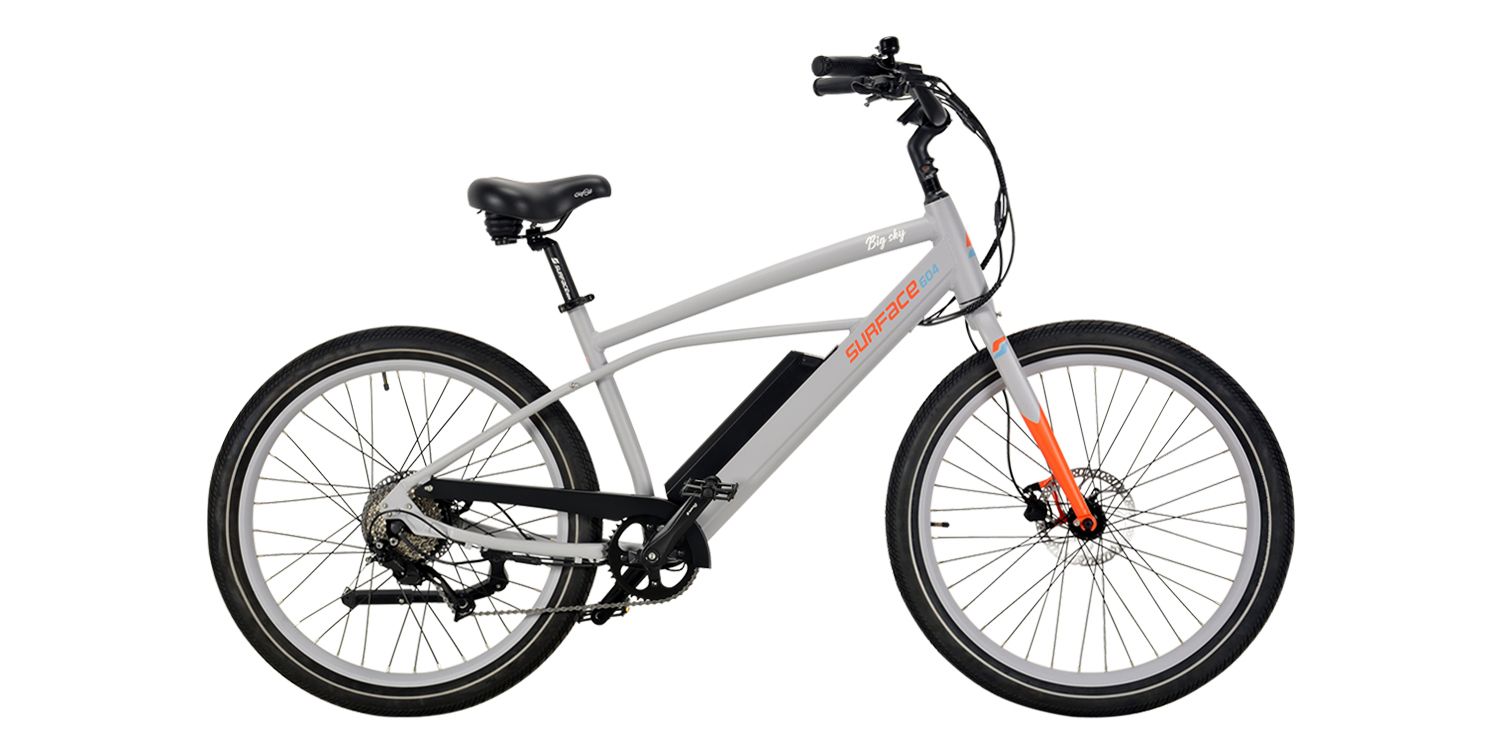
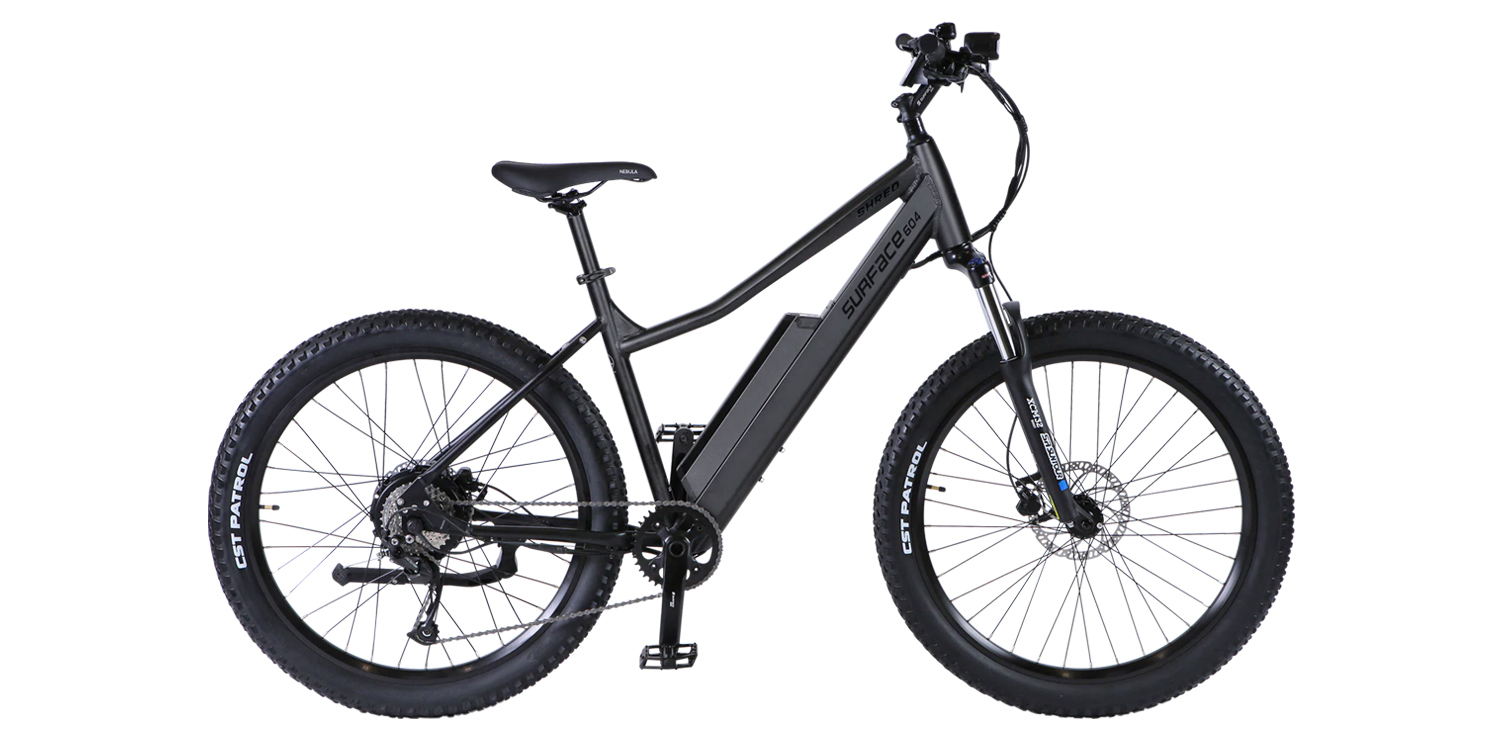
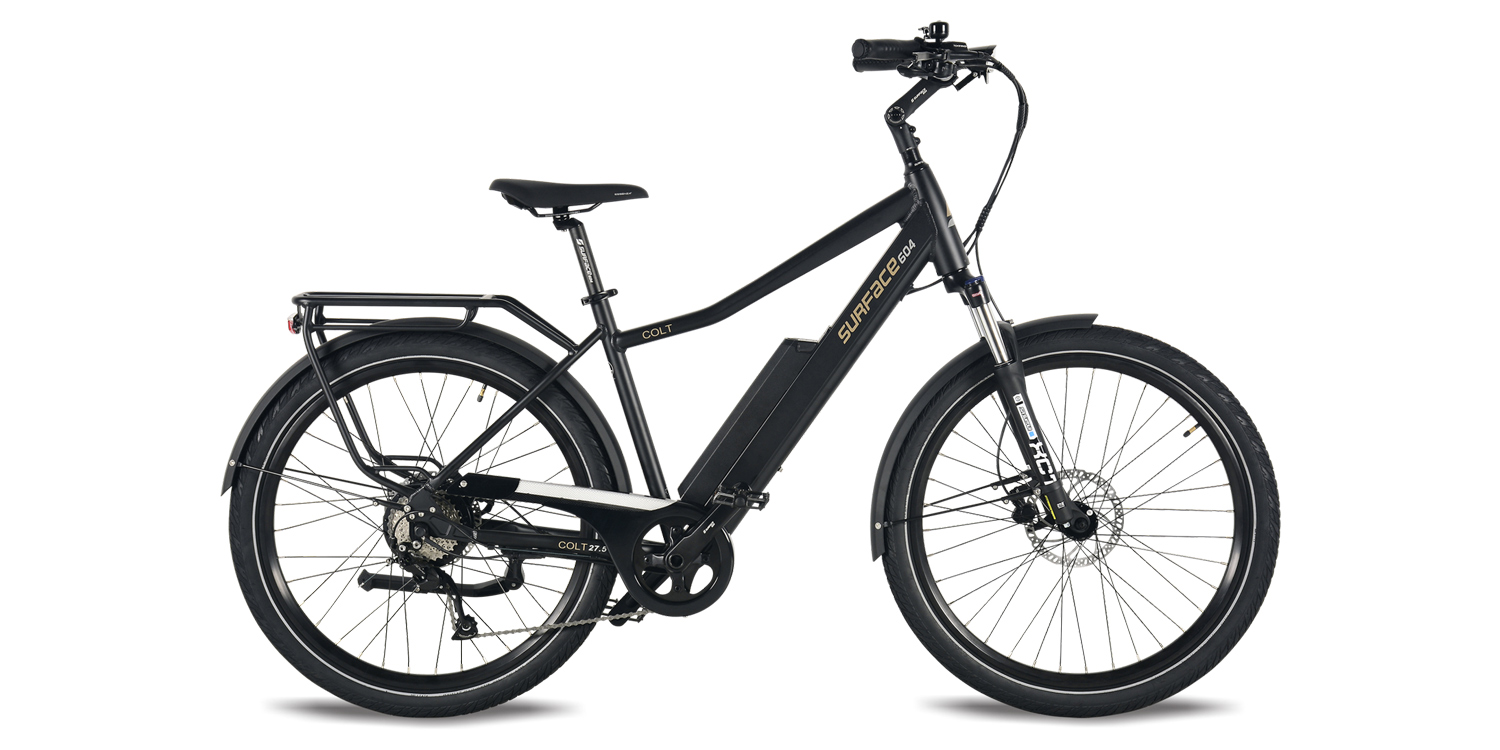
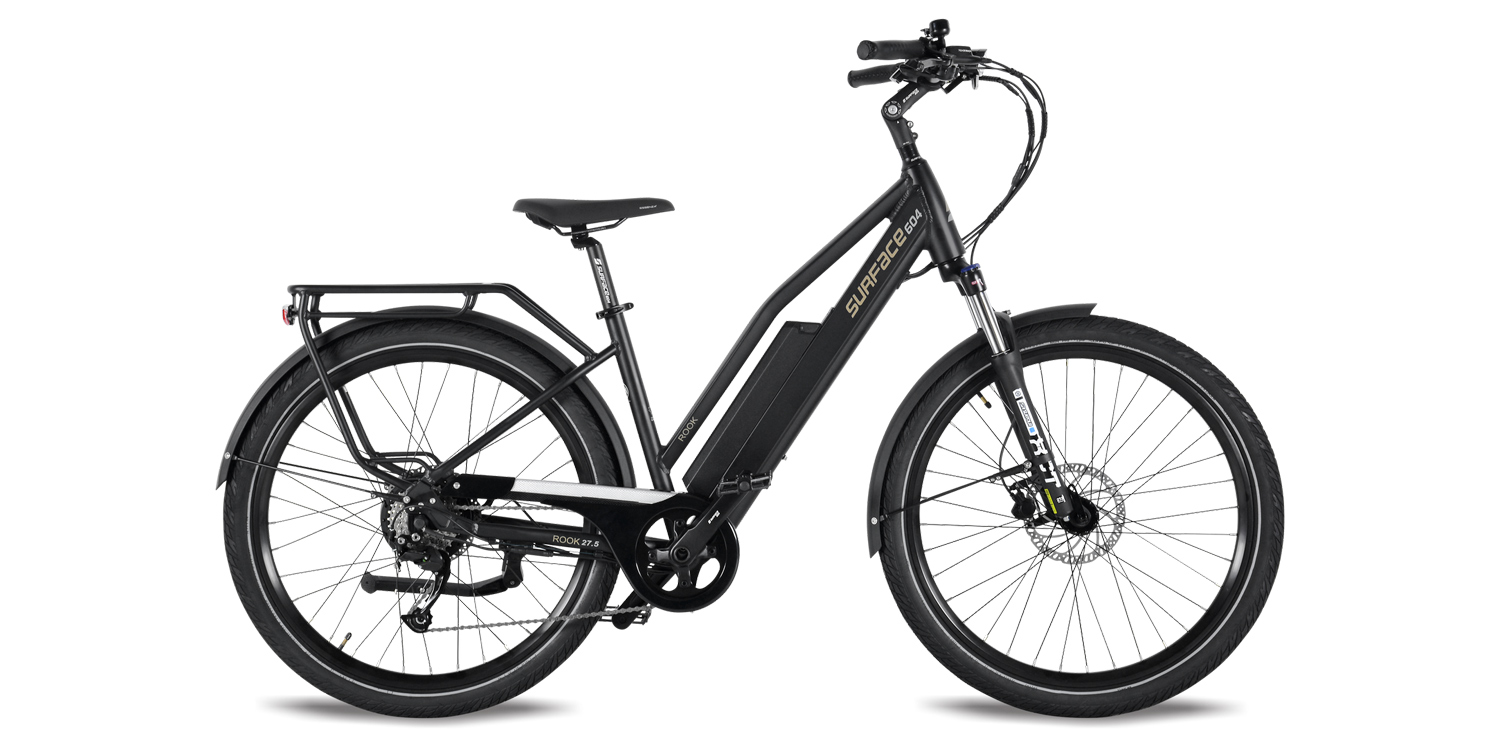
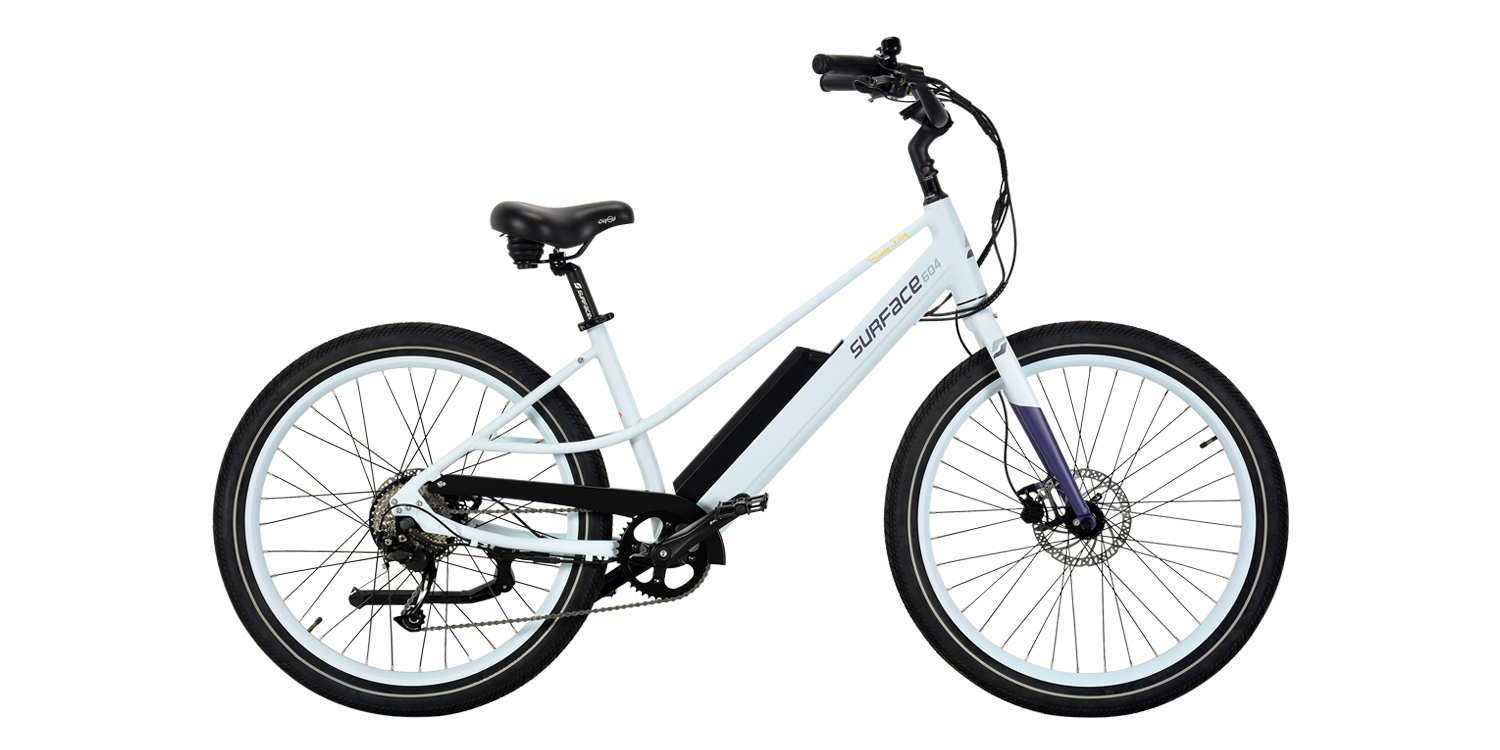
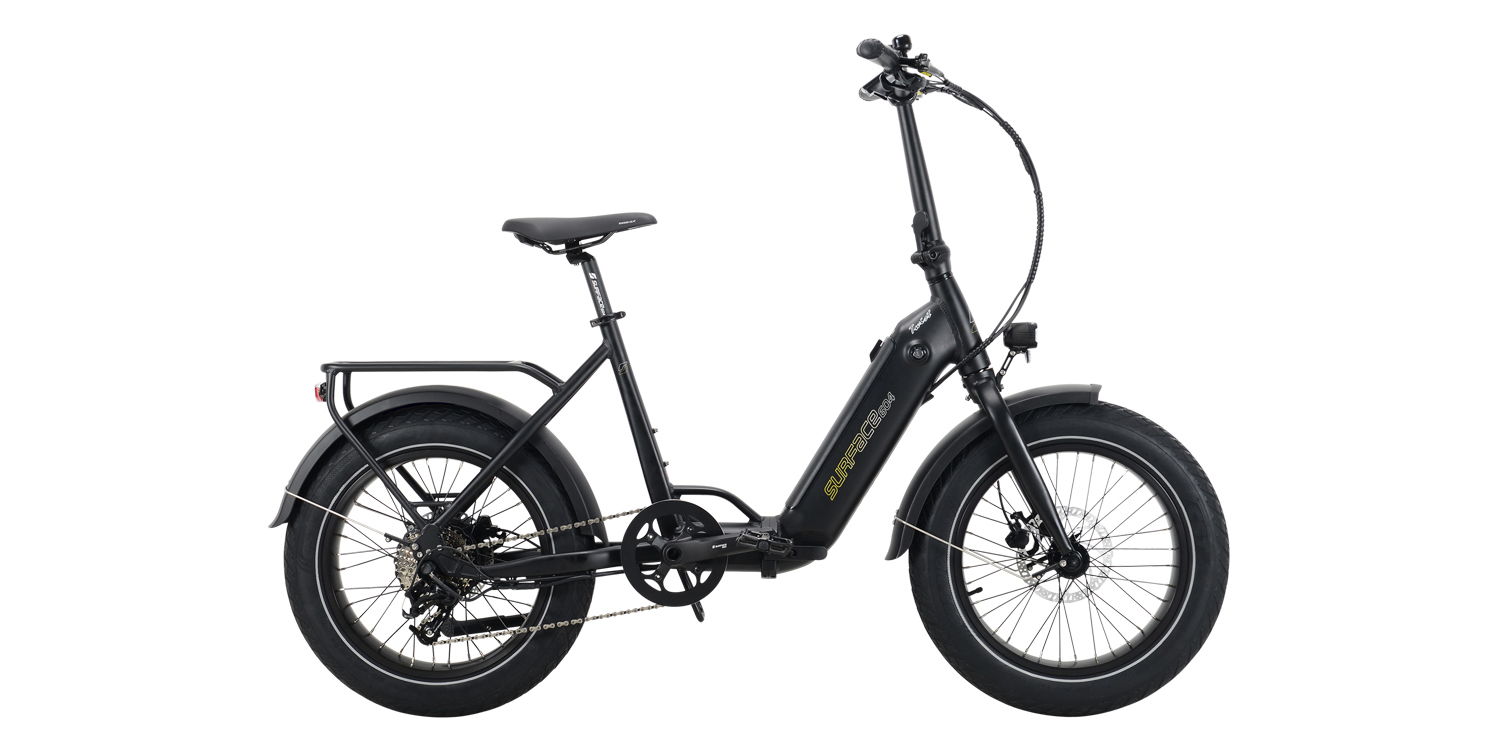


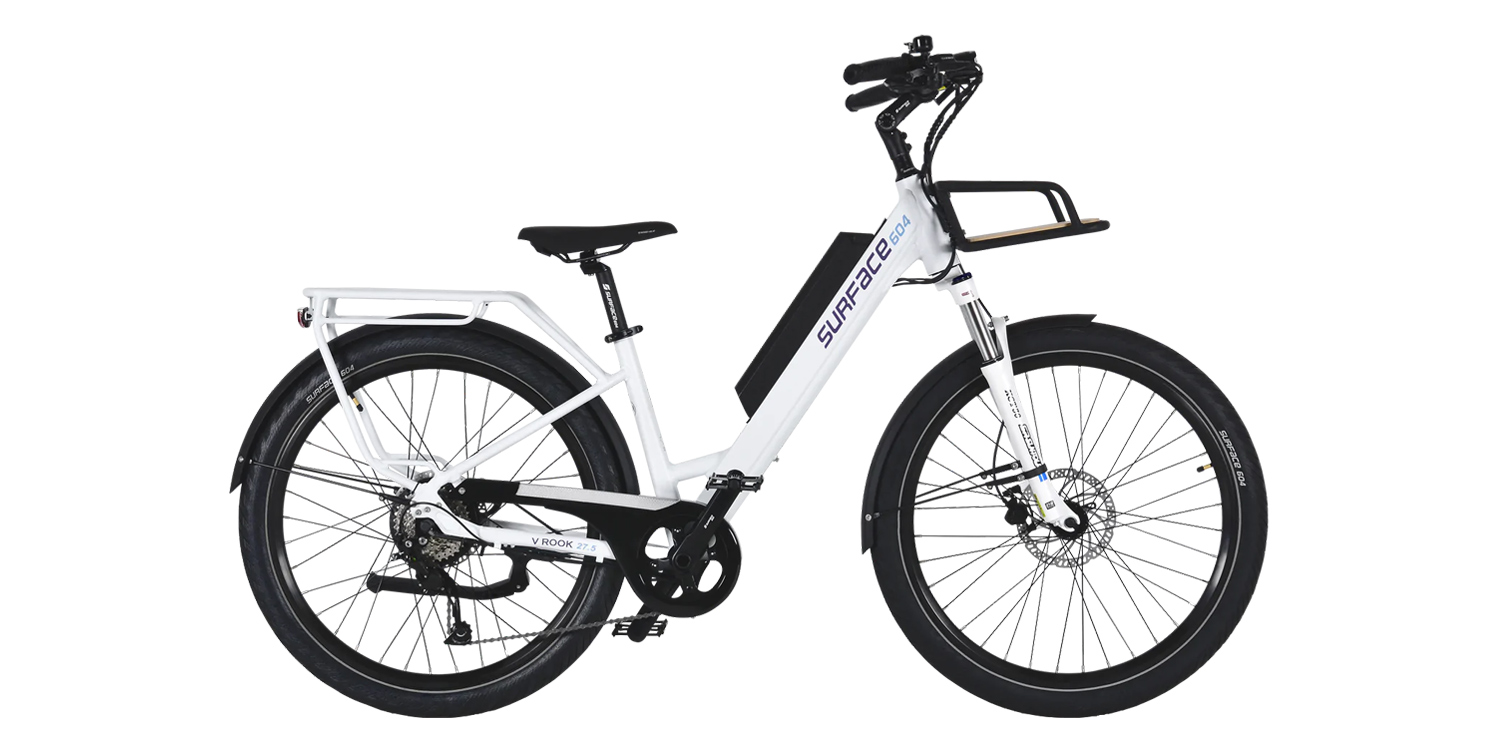
Reader Interactions